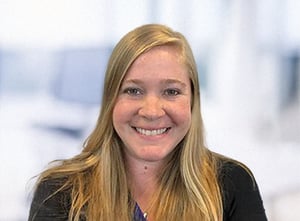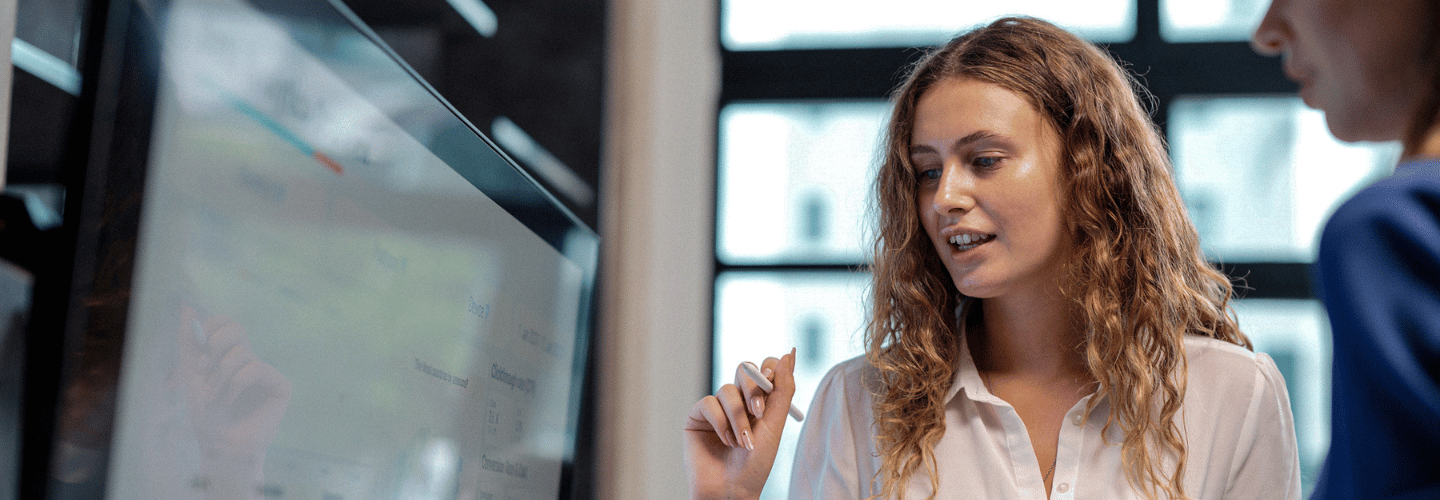In brief:
- Leaders and teams must get accustomed to operating in a state of uncertainty.
- To strengthen your organization’s muscle for moving through the gray area:
- Build growth mindsets
- Establish change structures
- Create adaptive operations
There is no absolute truth in business anymore. Disruption is coming from every corner, and 33 percent of business leaders we surveyed in December 2021 acknowledge that their organization will need to respond to change faster this year to keep up and prepare for any scenario.[1] Leaders and teams are up against a host of pressures coming from multiple directions: emerging digital and data capabilities; rising inflation and economic pressures; rapidly changing customer preferences; challenging workforce, regulatory, and societal dynamics; and much more.
Businesses that hope to compete in these circumstances cannot wait for perfect clarity to move forward. Instead, they must achieve a state of comfortable ambiguity and be able to operate in the “gray area,” a place where there is little clarity into what the near- and long-term future hold.
It’s time for leaders and teams to readily embrace change as an opportunity to evolve and find new ways to make decisions while taking disruption into account. Bold leaders who prime their people to thrive in the face of ambiguity will put change at the heart of their organizational culture. They will gain confidence in the gray area by building growth mindsets, establishing change structures, and creating adaptive operations. In this blog, we explore these three paths to strengthening your organization’s muscle for moving through the gray area.
Opportunity one: Building growth mindsets
Why do some companies make it big while others fall behind? The answer lies in part with mindsets. In particular, the growth mindset is an essential attribute of any adaptive organization that embraces opportunities in the face of uncertainty.
A growth mindset is an attitude that enables individuals to seek challenges, confront setbacks, and use failure as a guide for improvement. Growth mindsets are a product of learning cultures, where employees have the space to test, innovate, and iterate to keep pushing the envelope to help the organization move forward, even amid ambiguity. While we know how critical it is for your people and culture to embrace growth mindsets to succeed in the gray area, only 15 percent of leaders believe that culture and people play a role in enabling their organization to flex with change.[2]
It's time to shift the narrative. An important part of leadership today is modeling and encouraging a growth mindset among your employees. Consider the following techniques to get started:
- Self-reflection. To help promote growth mindsets throughout your organization, you must first foster one within yourself. That begins by making the space to self-reflect and identify opportunities to develop the skills that will enhance your ability to embrace change. Get real about your relationship with change. Ask yourself if you are someone who demonstrates learning agility, a critical trait for leading your business through periods of rapid transformation. Consider whether you are a leader who communicates with authenticity and empathy. Reflect on your ability to trust your employees—do you empower them to test, innovate, and iterate?
- Embracing new approaches. To develop your own growth mindset, tap into your curiosity. Actively seek out diverse experiences and strive to learn about new capabilities as often as you can; this will help broaden your perspective on what is possible. Create opportunities and a platform for employees to voice their concerns and opinions openly and safely. And listen to what they share, so you can make more informed decisions.
- Leveraging data and analytics. Use data and analytics capabilities to gather insights that allow you to understand organizational patterns and behaviors, such as your workforce’s current relationship with change. This will help inform your approach to building growth mindsets and associated employee behaviors and ways of working. You can also leverage data and analytics to empower a testing and learning culture, which ultimately inspires a more inclusive environment where individuals are comfortable taking calculated risks.
By building your own growth mindset, you’ll begin to plant the seeds for it to flourish across the rest of the organization. You’ll begin to take advantage of opportunities that emerge from internal or external sources, rather than shying away from change. Ultimately, this is the first step in supporting your workforce in rising to the demands of moving through the gray area.
Opportunity two: Establishing change structures
To support growth mindsets, it’s important to intentionally build structures that allow your organization to flex forward as conditions change. Our experience tells us that delivering change through hastily formed committees yields uneven, inconsistent results.
Instead, consider standing up formal transformation governance functions, such as:
- A Coalition of Advocates, a Community of Excellence, and a decentralized Community of Practice. These three key structures comprise what we call a change umbrella, which protects your business as you move through rapid change brought on by an external source. These three structures integrate experienced changemakers, connect them with the change advocates who can smooth the way, and create transparency around what’s working and what’s being learned.
- A Transformation Value Office (TVO). A TVO can help you build capability to drive change at scale and connect complex programs and initiatives to the greater organizational vision. A TVO can institutionalize data and analytics tools, such as Ally, to track leadership objectives transparently and keep progress front and center for all. In turn, this data can inform future initiatives for continued success. Ultimately, a TVO will keep your organization on track, tying programs and initiatives back to your overarching vision and allowing you to prioritize and make decisions even when the future is unclear.
- A strong Change Management Office (CMO) is a key partner to any TOV. The CMO provides structure and a shared process for the people side of change. These shared processes provide not only a common language for change that teams can align to but also a repeatable formula for approaching change. Aligning teams to these guardrails removes the guesswork and allows employees to focus on opportunities to learn and grow amid ambiguity.
Connecting a change umbrella with a TVO and CMO enhances the opportunities for more open and transparent communications between those who are impacted by change and those who are implementing it, ultimately building organizational confidence to operate in the gray.
Opportunity three: Prioritizing adaptive operations
Finally, it’s critical to establish agile operations that allow your organization to adapt amid uncertainty. Specifically, it’s about building flexibility into your operating model, which we define as a representation of how crucial elements of a business (people, structures, processes, governance, technology, and data) come together to drive outcomes for your customers.
To build adaptive operations that can flex with change, take a growth mindset view when evaluating each element of your operating model. For example, consider how your processes can improve and evolve to enable more adaptive operations. Leaders know that processes must be updated as strategies change over time, and that means process controls must also be able to evolve quickly enough to assure reliable process performance. Your processes provide guardrails, but they can be agile if you’ve established proper controls that alert you quickly when a process is teetering out of control.
To enhance or redesign your process controls in line with your strategy:
- Leverage data mining via an AI-enabled platform to continuously generate insights that allow you to monitor controls and iterate to drive process improvements.
- As part of this approach, utilize automated graphical control charts for a real-time understanding of the processes that are being stressed as strategies evolve.
- Gather voice-of-customer (VoC) and voice-of-end-user (VoU) feedback more quickly with unstructured data analysis tools that can generate continual feedback from sources such as call centers, websites, and emails.
Life isn’t black and white; rather, it’s gray. Changing too slowly or clumsily or having a static strategy will open your business to risks like never before. It will stall your transformation plans, drive costs of delay, and result in your organization falling behind the competition, including new entrants who are eager to disrupt the playing field. Those who refuse to “test and learn,” instead waiting for complete clarity or a perfect solution, will continually leave value on the table. And it’s a slippery slope—aversion to change can quickly become a part of your organization’s DNA. Organizations must shift mindsets to focus on the possible, build structures that help people be future-ready, and prioritize adaptive processes that put people at the heart of every decision.
[1]December 2021 North Highland-sponsored survey of > 500 employees at organizations with annual revenues > $1B and that are headquartered in the U.S. or U.K.
[2]December 2021 North Highland-sponsored survey of > 500 employees at organizations with annual revenues > $1B and that are headquartered in the U.S. or U.K.








